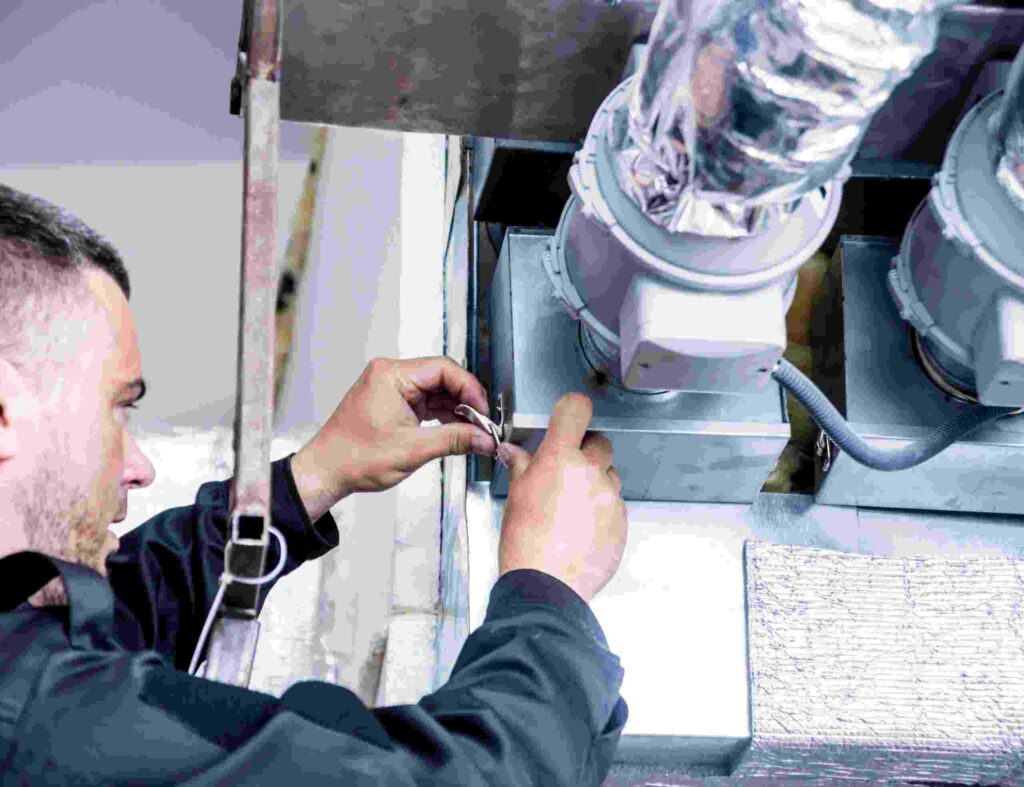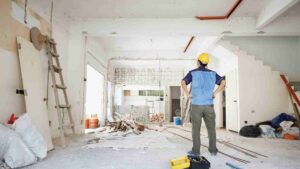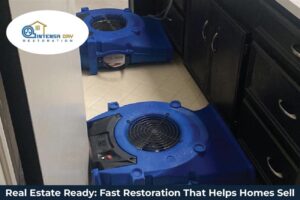Blogs
Restoring Fire-Damaged HVAC Systems in Plano

In the wake of fire incidents, the restoration of HVAC systems in Plano emerges as a complex and imperative undertaking. The aftermath of a fire extends beyond visible damage, necessitating a meticulous evaluation of critical components and hidden vulnerabilities. This introduction sets the stage for a comprehensive exploration of the multifaceted process involved in rejuvenating fire-damaged HVAC systems. From immediate emergency responses and diagnostic challenges to strategic planning and technological innovations, this discussion aims to unravel the intricacies of restoring functionality and safety to HVAC systems affected by fire in the Plano community. Amid the challenges, safety protocols and regulatory compliance play pivotal roles, ensuring not only the well-being of restoration professionals but also the adherence to legal standards. The synergy between technology and industry expertise becomes evident as advanced tools aid in identifying hidden damage and executing precision restoration. Collaborative efforts with insurance providers streamline processes, emphasizing transparency and efficiency. Moreover, the restoration process extends beyond immediate repair, emphasizing the integration of preventive measures for a resilient HVAC infrastructure. This exploration unfolds the comprehensive approach required, encompassing emergency responses, advanced technologies, safety protocols, and long-term sustainability considerations in the restoration of fire-damaged HVAC systems in Plano.
Revitalizing Resilience: Comprehensive Restoration of Fire-Damaged HVAC Systems in Plano
In the aftermath of fire, trust Intensa Dry to breathe new life into Plano’s HVAC systems—expert restoration for safety, efficiency, and peace of mind.

Understanding the Impact: Assessing Fire Damage on HVAC Systems in Plano
In the aftermath of a fire damage services, the initial step is to comprehensively assess the extent of damage inflicted upon HVAC systems in Plano. This involves a detailed examination of heating, ventilation, and air conditioning components to determine the severity of the fire’s impact. Professionals must inspect key elements such as electrical wiring, ductwork, and mechanical components. By understanding the depth of the damage, restoration teams can formulate effective strategies tailored to the specific needs of each HVAC system.
Emergency Response: Immediate Steps for Fire-Damaged HVAC Systems
Rapid response is crucial in mitigating further damage to fire-affected HVAC systems. This heading emphasizes the urgency of taking immediate steps to secure and stabilize the system. This could involve isolating damaged components, shutting down power sources, and implementing temporary solutions to prevent secondary issues. A swift emergency response not only helps in preserving salvageable components but also minimizes the risk of additional harm. This section provides insights into the critical actions that HVAC professionals and restoration teams must undertake during the initial stages to pave the way for a thorough and effective restoration process.
Diagnostic Challenges: Identifying Hidden Damage in Plano’s HVAC Infrastructure
Beyond the obvious signs of damage, this section delves into the diagnostic challenges faced when dealing with hidden or latent damage within the HVAC infrastructure. It explores the intricacies of identifying issues that may not be immediately apparent, such as compromised insulation or internal damage to HVAC units. Understanding these challenges is crucial for a comprehensive restoration plan, ensuring that all aspects of the system are thoroughly examined and addressed.
Safety First: Protocols for Inspecting and Handling Fire-Damaged HVAC Components
Safety is of paramount importance during the restoration process. This heading delves into the specific safety protocols that HVAC professionals must adhere to when inspecting and handling fire-damaged components. It covers measures such as personal protective equipment (PPE), proper ventilation to mitigate residual smoke, and guidelines for handling potentially hazardous materials. Emphasizing safety not only protects the well-being of restoration teams but also ensures a secure environment for subsequent repair and restoration activities.
Strategic Planning: Developing a Comprehensive Restoration Strategy for HVAC Systems
Once the assessment is complete, the focus shifts to strategic planning for the restoration process. This section outlines the key elements of creating a comprehensive restoration strategy tailored to the unique characteristics of each fire-damaged HVAC system. It covers considerations such as prioritizing repairs, sequencing tasks for efficiency, and incorporating contingency plans to address unforeseen challenges. A well-thought-out strategy is essential for a smooth and organized restoration process.
Critical Components: Addressing Damage to Furnaces, Ductwork, and Ventilation Systems
This part of the discussion zooms in on specific components critical to HVAC functionality and examines the unique challenges posed by fire damage to furnaces, ductwork, and ventilation systems. It explores the potential consequences of damage to these components and outlines the specialized techniques and approaches required for their restoration. By focusing on critical components, HVAC professionals can ensure that the core functions of the system are restored effectively.
Technological Solutions: Utilizing Advanced Tools for Assessing and Restoring HVAC Functionality
Advancements in technology play a pivotal role in the restoration process. This heading explores the innovative tools and technologies available for assessing and restoring fire-damaged HVAC systems. From thermal imaging for identifying hidden damage to advanced diagnostic tools for system analysis, incorporating technological solutions enhances the precision and efficiency of the restoration efforts. Understanding and leveraging these tools can significantly contribute to a successful restoration outcome.
Regulatory Compliance: Navigating Codes and Standards in Fire-Damage Restoration
Restoring fire-damaged HVAC systems involves adherence to various building codes and industry standards. This section outlines the regulatory landscape in Plano, highlighting the specific codes and standards that must be followed during the restoration process. It emphasizes the importance of compliance not only for safety and functionality but also to ensure that the restored HVAC systems meet legal and regulatory requirements. Exploring the intricacies of the fire restoration process in our comprehensive guide, we delve into the specialized considerations involved in restoring fire-damaged HVAC systems in Plano, emphasizing the importance of a meticulous approach to ensure a thorough recovery and the safety of your indoor environment.
Collaborative Efforts: Coordinating with Insurance Providers for Efficient Restoration
Collaboration with insurance providers is a critical aspect of the restoration process. This heading explores the collaborative efforts required to streamline the restoration and insurance claim processes. It delves into effective communication strategies between HVAC professionals and insurance representatives, documentation requirements, and the importance of transparency to facilitate a smoother and more efficient restoration experience.

Beyond Restoration: Implementing Preventive Measures to Safeguard HVAC Systems from Future Fires in Plano
The final section looks ahead to proactive measures aimed at preventing future fire damage. It discusses strategies for incorporating fire-resistant materials, implementing preventive maintenance schedules, and educating property owners on best practices to safeguard HVAC systems. By considering long-term preventative measures, this aspect ensures a more resilient and sustainable HVAC infrastructure in Plano, reducing the risk of future fire-related incidents.
FAQ’S
Q: What steps are involved in restoring fire-damaged HVAC systems?
A: The process typically includes an initial assessment, emergency response to prevent further damage, comprehensive diagnostics, strategic planning, and focused restoration of critical components.
Q: How can hidden damage in HVAC systems be identified after a fire?
A: Identifying hidden damage involves thorough inspections using advanced tools like thermal imaging to uncover issues such as compromised insulation or internal damage within HVAC units.
Q: What safety protocols are followed during inspections and handling of damaged components?
A: Safety protocols include wearing proper personal protective equipment (PPE), ensuring adequate ventilation, and implementing measures to handle potentially hazardous materials safely.
Q: What role does technology play in restoring fire-damaged HVAC systems?
A: Technology plays a crucial role, with advanced tools and diagnostic equipment enhancing the precision and efficiency of the restoration process, including thermal imaging for hidden damage detection.
Q: How can collaboration with insurance providers expedite the restoration process?
A: Collaborating with insurance involves effective communication, proper documentation, and transparency, streamlining the restoration and insurance claim processes for a more efficient and seamless experience.
Conclusion
In conclusion, restoring fire-damaged HVAC systems in Plano demands a meticulous and multifaceted approach. From the initial assessment of damage severity to swift emergency responses and comprehensive diagnostics, each step is crucial for a successful restoration. Safety protocols, strategic planning, and the utilization of advanced technologies play pivotal roles in addressing challenges posed by hidden damage. Regulatory compliance and collaborative efforts with insurance providers are essential for navigating legal landscapes and expediting the restoration process. Looking forward, integrating preventive measures ensures a more resilient HVAC infrastructure, mitigating the risk of future fire-related incidents. Ultimately, a well-executed restoration not only reinstates functionality but also contributes to the long-term safety and sustainability of HVAC systems in the Plano community. Additionally, the restoration process underscores the significance of prioritizing critical components, such as furnaces, ductwork, and ventilation systems, recognizing their fundamental roles in HVAC functionality. Throughout this intricate restoration journey, a balance between technological innovation and adherence to established codes and standards is vital. The collaborative synergy between HVAC professionals and insurance providers emerges as a key element, facilitating efficient communication and documentation for a smoother restoration experience. By addressing these facets comprehensively, the HVAC restoration process not only revives damaged systems but establishes a foundation for a resilient and preventive approach, fostering a safer and more sustainable future for Plano’s HVAC infrastructure.

